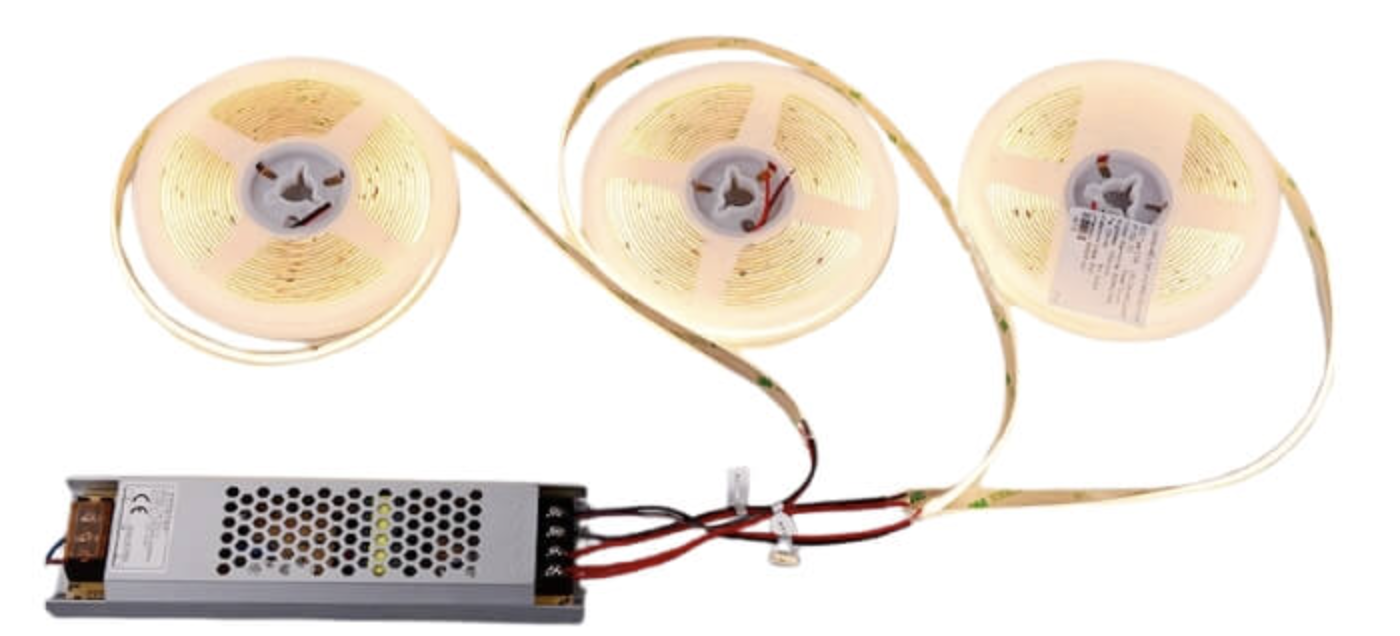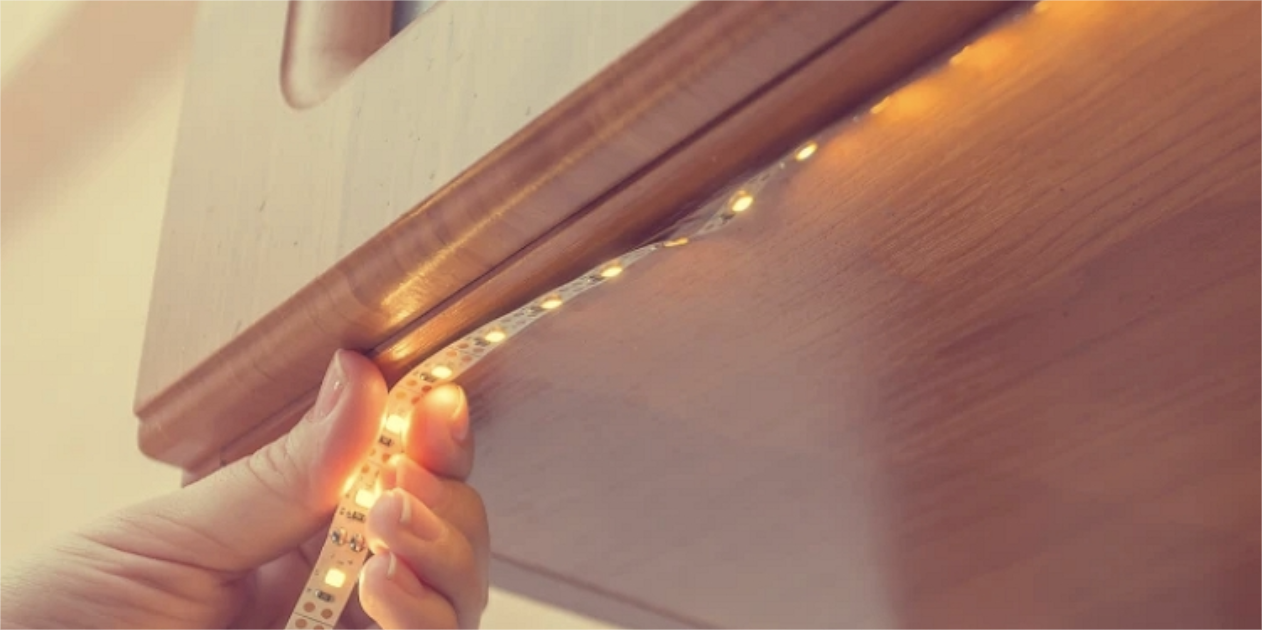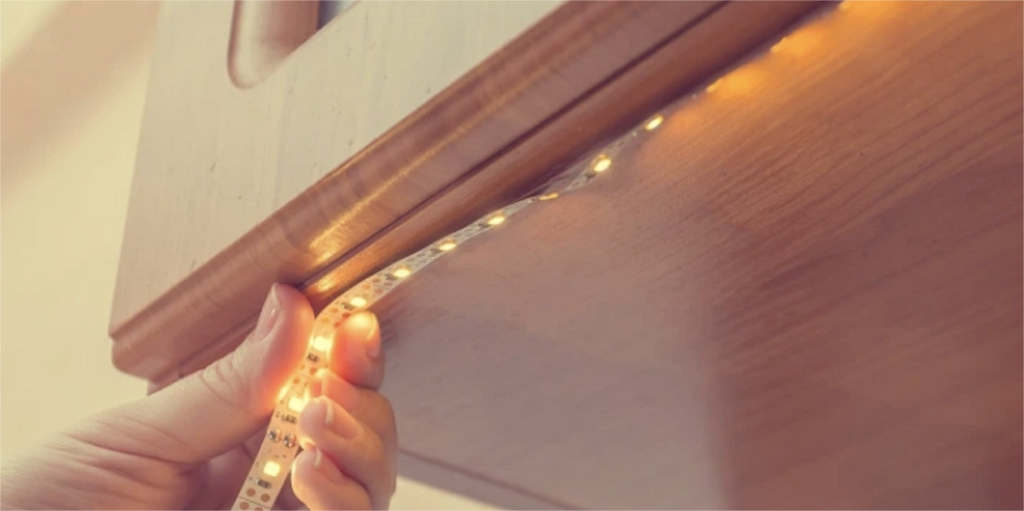How to Power LED Strip
Powering LED strips can be both simple and confusing. You want bright, consistent light that doesn’t overheat or flicker. By choosing the right power source—be it a wall adapter or a battery—you’ll get the glowing ambiance you need without hassles or safety worries.
LED strips often run on low DC voltages (like 5V, 12V, or 24V), making them safe and energy-efficient. To power them properly, you need a compatible power supply that matches the strip’s voltage and current ratings. If you prefer a cordless approach, certain battery packs can handle LED loads well—especially for small, decorative strips. Either way, checking wattage and ensuring ample ventilation will keep your setup flicker-free and cool to the touch.
Let’s dive into key questions and explore how you can keep your LEDs shining bright and steady.
Do LED strip lights need power supply?
LED strips aren’t magic—they need a specific voltage and current to work reliably. This is usually delivered by a DC power adapter designed to match the strip’s specifications.
Most LED strips demand a direct current (DC) source, so you can’t just plug them into a wall outlet. For instance, a 12V LED strip requires a 12V power adapter capable of supplying enough amps. If your strip draws 2 amps, aim for an adapter rated for at least 2.5 amps. Otherwise, you’ll get dim lights or sudden shutdowns. Matching voltage and amperage isn’t just a formality—it’s vital for stable performance and extended LED lifespan.

When I first tried LED strips in my living room, I used a leftover adapter from an old router, hoping it would somehow work. The lights glowed briefly, then flickered off. That’s when I realized how crucial voltage and amperage matching truly are.
Voltage Requirements
LED strips typically come in 5V, 12V, or 24V variants1. Each type is designed to operate within a narrow voltage range. Using the wrong voltage either burns out the diodes or causes them to dim and fail. Always check your strip’s labeling or manual. If it reads “12V,” it needs a 12V DC supply2—no exceptions.
Current and Wattage
A strip’s wattage per meter and total length help you calculate its power draw. For example:
| Strip Length | Wattage/ Meter | Total Watts | Voltage | Current Required |
|---|---|---|---|---|
| 1m | 5W | 5W | 12V | ~0.42A |
| 2m | 5W | 10W | 12V | ~0.83A |
| 5m | 5W | 25W | 12V | ~2.08A |
Multiply wattage per meter by length to get total wattage. Then divide by voltage to find the needed current. Aim for an adapter slightly above that current for a buffer—like a 3A supply for a 2.5A load.
Practical Tips
- Check Labels: Strip packaging usually lists recommended voltage and current.
- Choose Quality: Low-quality adapters may not deliver stable voltage under load, causing flickers.
- Provide Ventilation: Even with correct voltage, LED strips can heat up if installed in tight spaces. Good airflow helps maintain brightness and longevity.
By matching voltage, ensuring ample current, and giving your LEDs some breathing room, you’ll prevent flicker, dimming, and premature burnout. A proper power supply might cost a little more, but it pays off in consistent light and a hassle-free setup.
Can you leave LED strip lights on all the time?
People love the soft glow of LED strips around the clock—for ambiance or even a night-light. Are they safe for 24/7 use, and how does nonstop operation affect their lifespan?
LEDs are designed for efficiency and produce minimal heat compared to older bulbs. This makes them generally safe for continuous use, as long as they’re powered by a suitable supply and have adequate ventilation. Avoid cramming them in sealed enclosures at high brightness if you want them to last. Also, a well-matched power adapter ensures steady current, preventing stress on the diodes. Keep an eye out for unusual warmth or dimming; it could signal overloading or poor airflow.

I adore the subtle lighting from LED strips lining my kitchen cabinets. It helps me find midnight snacks without fumbling for switches. This constant glow raises a question: do 24/7 lights degrade more quickly than those used intermittently?
LED Durability
LED chips3 are incredibly durable compared to incandescent bulbs, often boasting lifespans of 30,000 hours or more. That’s why running them continuously won’t necessarily burn them out quickly. However, heat management4 is key. Even though LEDs run cooler, they still generate some heat at the diode junction, and too much warmth can shorten their life.
Checking Heat and Ventilation
Placing LED strips in tight corners or sealed channels without airflow can trap heat. Over time, that mild heat might cause the adhesive backing to fail or the diodes to lose brightness. If your strips are slightly warm to the touch—like a lukewarm coffee mug—that’s typically fine. But if they’re uncomfortably hot, you may need to reduce brightness or allow airflow.
Managing Load and Driver Stress
A subpar or underpowered adapter can overheat when used around the clock. Look for adapters that meet or exceed your LED strip’s power requirement, such as:
| Strip Power Demand | Recommended Adapter Rating |
|---|---|
| 15W | 20W or higher |
| 30W | 36–40W |
| 60W | 72–80W |
A bigger adapter handles surges and doesn’t run at its limit nonstop.
Ultimately, continuous operation is feasible if your strips have good ventilation and a robust power supply. Routine checks—feeling for heat or spotting any dim sections—give clues about potential issues. If everything stays cool and bright, leaving them on can enhance your home’s ambiance day or night.
What battery can power an LED?
Sometimes you need LED strips on the go—a quick booth setup, holiday décor, or an emergency light. Which batteries work best, and how do you avoid fast drains or overheating?
Any battery that matches your LED strip’s voltage and current needs can work. For small strips, AA or AAA batteries in a series can suffice. A 9V block battery powers short LED segments but may not last long. Meanwhile, for heftier projects, lithium-ion packs like 18650 cells offer more energy density and steady output. Always verify that the battery voltage aligns with the strip’s specifications, and consider adding a current-limiting resistor or dedicated driver if needed.

I once built a battery-powered LED costume for a Halloween party. It used a few short strips, so I initially tried four AA batteries in series for around 6V. The lights looked decent, but they began to dim after an hour—alkaline cells just couldn’t sustain that load for long. That’s when I switched to lithium-ion cells.
Different Battery Options
-
Alkaline (AA, AAA)
- Easy to find, inexpensive.
- Good for small or short strips.
- Voltage drops steadily as they deplete.
-
9V Block Battery
- Convenient single pack.
- Limited capacity, drains quickly under higher loads.
- Good for short experiments or demos.
-
Lithium-ion (18650, 14500)
- Higher energy density, more stable voltage.
- Rechargeable, better for extended use.
- Requires dedicated charger and protection circuit.
| Battery Type | Voltage | Pros | Cons |
|---|---|---|---|
| AA/AAA Alkaline | ~1.5V per cell | Widely available, cheap | Low capacity under heavy load |
| 9V Block Battery | 9V | Single piece, portable | Short runtime, not cost-effective |
| Li-ion (18650 or 14500) | 3.7V nominal | Rechargeable, powerful | Needs special charging, careful handling |
Matching Voltage and Current
If your LED strip is rated for 5V, you could string together three alkaline cells for ~4.5V or rely on a USB power bank5 at 5V. For 12V strips, you’d need a series arrangement of batteries to reach 12V, which can be cumbersome. Alternatively, you might find specialized battery packs with built-in converters that step up voltage to 12V.
Regardless of the battery type, monitoring discharge is wise—some LEDs will dim gracefully, while others might flicker or shut off abruptly. For longer run times, plan on extra sets of batteries or invest in a robust rechargeable solution6. That way, you won’t be left in the dark midway through your event or decoration.
Do battery-powered LED lights get hot?
LEDs generate less heat than incandescent bulbs, but they’re not entirely heat-free. If you’re using batteries, how do those electronics fare under continuous use?
Battery-powered LED lights typically stay cool, though they may warm slightly after prolonged operation. The diodes themselves produce minimal heat, but the driver circuitry could generate warmth—especially if boosting voltage. If the battery or circuit board feels uncomfortably hot, that’s a sign of overload or potential wiring issues. In most cases, modest warmth is no cause for alarm, but scorching heat indicates a need to shut things down and inspect.

I once attached a compact LED strip to a small 9V battery pack for a kid’s science project. After an hour, the battery pack was slightly warm, but not concerning. That warmth mostly came from the basic boost circuit stepping up current for the LEDs.
Why LEDs Stay Cool
- Efficiency: LEDs convert most of their energy into light rather than heat.
- Low Operating Voltage: Battery-powered systems often run at 3–12V, minimizing wasted energy.
Still, the controller or driver within battery-powered LED setups7 might raise temperatures if it has to regulate voltage from a near-depleted battery. The difference in voltage can cause the driver to work overtime, producing extra heat. Usually, this heat is moderate. If the pack becomes very warm, it might indicate a short circuit8 or an incompatible driver.
Battery Chemistry
- Alkaline: Mild warming, especially near the end of battery life.
- Lithium-ion: Can heat under high loads or improper charging. Typically safe with a quality protective circuit.
| Battery Type | Typical Heat Level | Potential Concern? |
|---|---|---|
| Alkaline | Minimal warming | Usually none unless overloaded |
| NiMH Rechargeable | Mild warmth | Rarely an issue in small LED sets |
| Li-ion | Moderate if high load | Overdischarge or short can spike temps |
Installation Tips
Give the battery box a bit of airflow. Placing it in a tight space or wrapping it with insulating materials may trap heat. Also, powering your LED strip at a slightly lower brightness can help keep temperatures down while still providing a pleasant glow.
In most common scenarios—fairy lights, accent lighting, small decorative strips—battery-powered LEDs remain only mildly warm to the touch. Just do a quick test when you first set up your lights, and if the temperature feels safe, you’re good to go.
Conclusion
Powering LED strips hinges on choosing the right supply—be it a stable adapter or the right battery—and ensuring they get enough ventilation. By matching voltage, managing heat, and avoiding overload, you’ll enjoy bright, reliable illumination that can shine around the clock with minimal hassle.
-
Understanding the differences can help you choose the right LED strip for your project, ensuring optimal performance and longevity. ↩
-
Choosing the right power supply is crucial for the safety and efficiency of your LED lighting. This guide helps you make the right choice. ↩
-
Understanding the durability of LED chips can help you make informed decisions about lighting solutions, ensuring longer-lasting and more efficient lighting. ↩
-
Proper heat management is crucial for maximizing the lifespan of LED lights, preventing premature failure and maintaining brightness over time. ↩
-
Using a USB power bank for LED strips offers a portable and convenient power solution, ideal for events or decorations. ↩
-
Exploring rechargeable solutions for LED lighting can save you money and hassle in the long run, ensuring your lights stay on longer. ↩
-
Understanding the mechanics behind battery-powered LED setups can help optimize their performance and longevity. ↩
-
Identifying the causes of short circuits can prevent potential hazards and extend the lifespan of your devices. ↩







